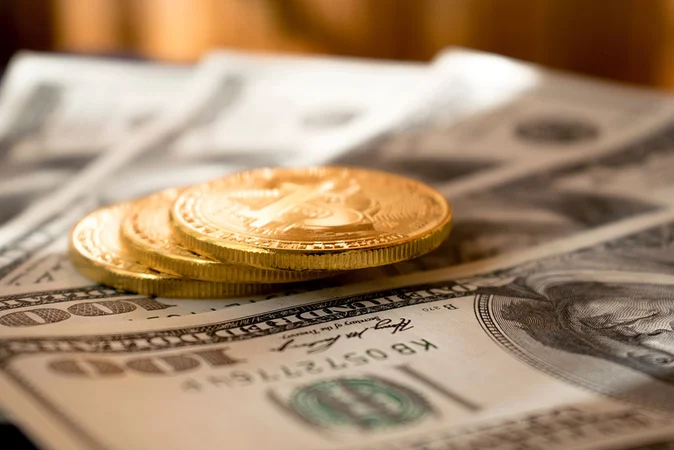Keeping It Fair and Square: Unraveling the Genesis Block of XRP
The initial distribution of cryptocurrencies like XRP has always been a highly debated topic among investors in the crypto community.Ripple’s CTO explains XRP distribution and reveals who had control over 99% of the supply at the beginning.
The distribution of cryptocurrencies, especially during their initial stages, has always been a topic of interest for investors. Some may argue that certain events, like the Genesis block, weren’t fair and raised concerns about the distribution process. One such cryptocurrency that has recently faced scrutiny is XRP. To address these concerns, Ripple CTO David Schwartz has stepped forward to shed light on the matter.
What Happened To The Genesis Block?
David Schwartz stirred up the Bitcoin community with a tweet where he playfully ridiculed a Bitcoin enthusiast’s opinion about XRP’s worthlessness. This led to a heated debate regarding the legitimacy of XRP. In response, a user named @MetaMan_X asked Schwartz whether any other blockchain had lost its entire genesis block.
For those unaware, the XRP Ledger starts at #32,569 instead of the usual #1. This unconventional beginning has been a point of contention. However, Schwartz defended the XRP Ledger, stating that “The choice of what to consider the genesis block is arbitrary.” To drive his point home, he highlighted a similar hiccup in the Ethereum blockchain. Apparently, even Ethereum had transactions that were not recorded on the blockchain, including a substantial transaction worth $6 million that was carried out by Schwartz himself. Talk about leading by example!

How Was The XRP Supply Distributed At Genesis?
Schwartz continued to defend the XRP Ledger when people asked for evidence of transactions included in the genesis block. He clarified that there were no transactions in the Genesis block. Out of the 32,570 missing ledgers, Schwartz revealed that only 534 transactions were present. Therefore, it is assumed that all those initial transactions are lost forever.
- Cardano (ADA) Price Threatens Bearish Breakout Amid Stagnating TVL
- 🚀 The Rise of NuggetRush: A New Era of Meme Coins
- Vatican Monk Embraces AI but Calls for Ethical Governance
Another interesting piece of information shared by the Ripple CTO was how the XRP supply was initially distributed. At the start, the founders received 20% of the total supply, with Jed McCaleb and Chris Larsen each receiving 9%. The remaining 2% went to a third founder, Arthur Britto, completing the 20% allocation for the founders.
The vast majority of the supply was allocated to the company, then called OpenCoin and now known as Ripple, with 99.99% being sent to the company’s wallets. The remaining 0.013% was distributed to beta testers and developers on the blockchain. This revelation offers insight into the XRP distribution process and explains why Ripple holds a significant portion of the supply.
Currently, Ripple releases one billion coins from escrow every month. Out of these, 200 million tokens are allocated for operational costs, while the remaining 800 million are sent back to escrow.
Q&A: What Do Readers Want to Know?
Q: Are there any potential risks associated with lost transactions in the XRP Ledger?
A: While the missing transactions from the early ledgers might raise concerns, they are unlikely to have significant implications in the present. However, it is always recommended to exercise caution and stay updated with any developments regarding the XRP Ledger.
Q: How does the distribution of XRP tokens at Genesis compare to other cryptocurrencies?
A: The distribution of tokens varies from one cryptocurrency to another. However, the allocation to founders and the company is a common practice. It is important for investors to understand these distributions and consider them when evaluating the overall supply and potential value of a cryptocurrency.
The Future of XRP
Understanding the genesis block and the initial distribution of XRP can provide valuable insights into the cryptocurrency’s journey. As with any investment, it’s essential to consider these factors when formulating strategies and making decisions.
The Ripple CTO’s explanations, although entertaining, underscore the arbitrary nature of Genesis blocks and highlight the hiccups experienced even by well-established cryptocurrencies like Ethereum. As the cryptocurrency market evolves, it is crucial to stay informed and evaluate investments based on current and future trends.
References:
- Ripple CTO David Schwartz’s Explanation
- Analyst Predicts XRP Price Breakout
- Privacy Advocate Exposes Ledger Live’s Tracking
- Trillion-Dollar Franklin Templeton Shares High Praise For Solana
- XRP Price Set to Spike as Ripple Enters Another $15 Trillion Industry
🌟 If you enjoyed this article, feel free to share it on your favorite social media platforms and spark a lively discussion! 💬
We will continue to update Blocking; if you have any questions or suggestions, please contact us!
Was this article helpful?
93 out of 132 found this helpful
Related articles
- Crypto Trader Makes $6.77 Million Profit in Just Three Hours: The Power of Banana Gun 🍌🔫
- Innovault Review Scam or Legit Trading Software?
- BONK Price Analysis: Is BONK Headed for Zero? 📉
- MetaMask Introduces Validator Staking: Run Your Own Node (with a Price)
- Google’s $1 Billion Data Center Expansion Signals Ambitious Growth Plan
- Bringing AI Research Closer Together: Mark Zuckerberg’s Announcement
- Netherlands to Invest 204.5 Million Euros in Artificial Intelligence



